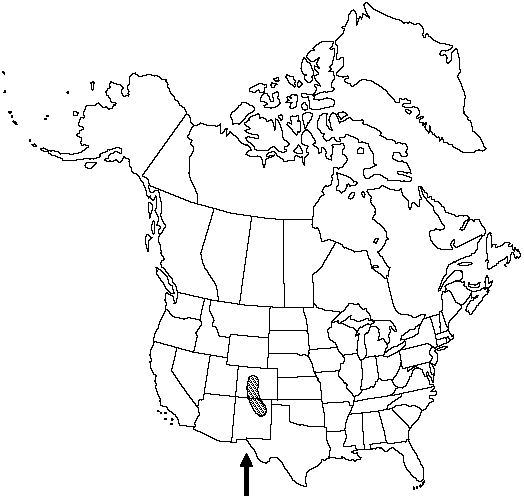Selaginella weatherbiana
Amer. Fern J. 40: 69. 1950.
Plants on rock, forming clumps. Stems radially symmetric, underground (rhizomatous) and aerial, not readily fragmenting, irregularly forked; rhizomatous and aerial stems often with 1 branch arrested, budlike, tips straight; aerial stems erect, less often ascending, cespitose, stout, branches not conspicuously arrested, budlike branches mostly near base. Rhizophores borne on upperside of stems, mostly restricted to rhizomatous stems or to lower 1/2 of aerial stems, 0.16–0.26 (–3) mm diam. Leaves dimorphic, not clearly ranked. Rhizomatous stem-leaves persistent, loosely appressed, ascending, often incurved, scalelike. Aerial stem-leaves tightly appressed, ascending, green, linear-lanceolate to narrowly lanceolate, 1.7–2.4 × 0.36–0.43 mm; abaxial ridges prominent; base cuneate and decurrent on main-stem or rounded and abruptly adnate on apical branch portions, glabrous or pubescent; margins short-ciliate at base, cilia transparent, spreading, denticulate, and ascending toward apex, 0.03–0.06 mm; apex keeled; bristle transparent to opaque or yellowish to brownish (on old leaves), puberulent to smooth, 0.3–0.6 (–0.7) mm. Strobili solitary, (0.7–) 1–3 cm; sporophylls narrowly ovatelanceolate to lanceolate, abaxial ridges prominent, base glabrous, margins denticulate to short-ciliate, apex keeled, bristled. 2n = 18.
Habitat: Exposed or shaded granitic rock outcrops, ledges, cliffs, or in rock crevices
Elevation: 1600–3000 m
Discussion
One of the most striking features of Selaginella weatherbiana is that at branch forks the larger branch continues to grow as a vegetative shoot, and the smaller one usually forms a strobilus. Therefore, the strobili appear to be lateral rather than terminal. Selaginella weatherbiana grows in close association with S. underwoodii (R. M. Tryon 1955). The two species (as well as S. mutica var. mutica) are very often mixed on herbarium specimens.
Of conservation concern.
Selected References
None.
Lower Taxa
"thick" is not a number.
